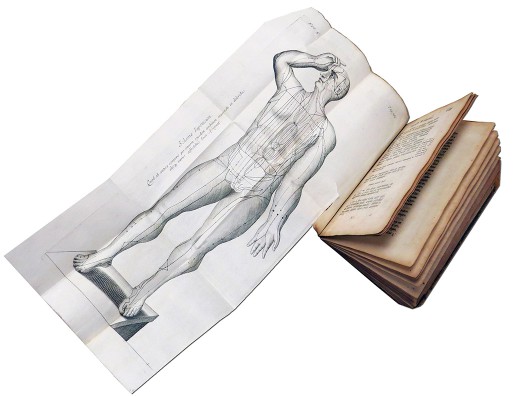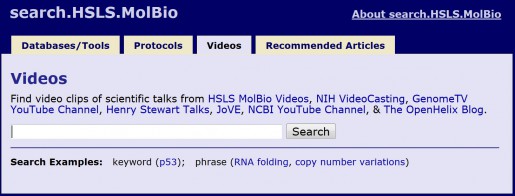HSLS is very fortunate to be the recipient of generous gifts from faculty, alumni, and other friends. With the support of the thoughtful people listed below, our library will continue to provide essential resources to enhance the quality of health care in western Pennsylvania and beyond. Continue reading
How Do You Manage Your Data? Let Us Know!
Do you have a great file-naming system that everyone in the lab uses, or have you “lost” files because lab members moved on and you’re not sure how their files were labeled? Do you have a protocol for sharing your data, or do you still have questions about credit and proper usage? Do you have a data management plan in place, or do you need help coming up with one? We would love to have a conversation with you to discuss all of these issues and more.

HSLS is conducting a research study to collect information on researchers work flows and data management practices. Participation in the study will require one interview, conducted in the researcher’s lab space and taking an average of 45–60 minutes.
Our intention is that participation in this interview will benefit you and your research laboratory by bringing to light possible modifications that could be made regarding management of data in your research setting.
The data received will be used for research purposes and library educational efforts. Your responses will remain confidential and data will be saved on a password protected server.
To participate, or if you have questions, please contact the study PI: Melissa Ratajeski.
~Carrie Iwema
“MeSH on Demand”: A Helpful PubMed Search Tool
Do you ever have trouble coming up with relevant medical subject headings (MeSH) for your PubMed searches? Well, help is here! NLM has developed a natural language processing tool called “MeSH on Demand” that analyzes a block of text and returns a list of relevant medical subject headings.
Here’s how it works:
1. Type or copy/paste your text into the “MeSH on Demand” search box (up to 10,000 characters). The simple example, “How many hours should residents work?” was typed into the text box below.
2. After adding your text, click on the Find MeSH Terms button on the right side of the screen. Processing time usually takes about 35-45 seconds, but can vary depending on the length of the request. After submitting your inquiry, there is no indication that it is being processed so be patient.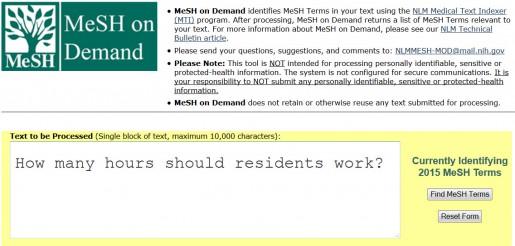
3. On the Results page, you’ll find:
- The text you entered in the search box and the number of corresponding characters.
- A list of suggested MeSH terms. For this example, “work” and “physicians.”
- PMID links to 10 related PubMed citations listed in order of relevance from 1 to 10. Each of these articles was relevant to the search topic. You can also view the human-generated indexing for each article by clicking on the PMID link, which takes you to the PubMed abstract display of the article; then click on Publication Types, MeSH Terms to view the human-generated MeSH. There is a disclaimer at the bottom of the Results page stating that the suggested MeSH terms are machine-generated and do not reflect any human review. You should expect the results to differ from PubMed’s human-generated indexing.
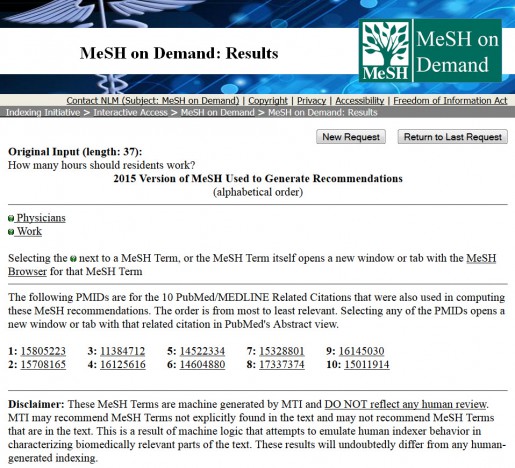
“MeSH on Demand” is a good place to jump-start a PubMed search. For further information about “MeSH on Demand” or searching PubMed, contact the HSLS Main Desk at 412-648-8866 or Ask a Librarian.
~Jill Foust
Treasures from the Rare Book Room: Willem ten Rhijne on Acupuncture
During the second half of the 17th century the Dutch East India Company (the Verenigde Oostindische Compagnie), known as VOC, managed to monopolize trade with Asia. It was a new kind of corporation: an aggressive commercial firm which became a profit-making, semi-independent arm of the Dutch state. Its trading post on the island of Deshima was the only window to Japan, otherwise inaccessible for foreigners after the Tokugawa government adopted a national seclusion policy.
Despite the restrictions of a “closed country” some Japanese were still interested in European knowledge, especially medicine and astronomy. The VOC physicians were an excellent source of knowledge for interpreters who continued to work on translating medical books from Europe. In 1673, per the official shogun’s request to bring a physician with botanical and chemical experience,¹ VOC hired Willem ten Rhijne, a young physician educated in Angers and Leyden. As soon as he arrived in Japan he was subjected to many long interviews exploiting his knowledge of western medicine. Ten Rhijne, in return, used contacts with interpreters to inquire about the Japanese practice of acupuncture and moxibustion (fire acupuncture) and, with their help, to learn more on the subject from Chinese texts available to him on Deshima. The result was his book Dissertatio de Arthritide (London 1683), including among others, a very important treatise on acupuncture. The text portrayed Japanese practitioners with admiration for using this therapy to treat diseases in place of the detested European practice of bloodletting.² One may question the accuracy 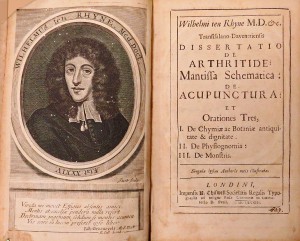 of the final transfer of knowledge taken from a Chinese text and translated to Japanese, then to Dutch, and finally rendered in Latin as “De Acupunctura,” but there is no question that for Europeans it was the first detailed account of acupuncture practice. The treatise is illustrated with two Japanese and two Chinese schematics of meridian points, as well as images of the moxa (mugwort) and an acupuncture needle.
of the final transfer of knowledge taken from a Chinese text and translated to Japanese, then to Dutch, and finally rendered in Latin as “De Acupunctura,” but there is no question that for Europeans it was the first detailed account of acupuncture practice. The treatise is illustrated with two Japanese and two Chinese schematics of meridian points, as well as images of the moxa (mugwort) and an acupuncture needle.
The library’s copy of Dissertatio de Arthritide is a variation of the original edition with a single place of publication. It includes all six plates and a frontispiece portrait of the author sometimes missing from other copies. It belonged to Caspar Wistar Pennock (1799-1867), a physician from Philadelphia. It was later acquired by Gerald Rodnan, and eventually donated to the library by his heirs. It can be viewed in the Rare Book Room by appointment.
~Gosia Fort
1. Cook, H. J. Matters of Exchange: Commerce, Medicine, and Science in the Dutch Golden Age. (New Haven, CT, 2007).
2. Carrubba R.W. and Bowers, J. Z. “The Western World’s First Detailed Treatise on Acupuncture: Willem Ten Rhijne’ De Acupunctura.” Journal of the History of Medicine, 29(4): 371-98, October 1974.
HSLS Staff News
Publications
Michele Klein-Fedyshin, reference librarian, published, “Translating Evidence into Practice at the End of Life: Information Needs, Access, and Usage by Hospice and Palliative Nurses,” in Journal of Hospice & Palliative Nursing, 17(1): 24-30, February 2015.
Ester Saghafi, reference librarian, along with co-authors J.W. Kim1, E.M. Szigethy2, N.M. Melhem3, and D.A. Brent4, published “Inflammatory Markers and the Pathogenesis of Pediatric Depression and Suicide: A Systematic Review of the Literature,” in Journal of Clinical Psychiatry, 75(11): 1242-53, November 2014.
- Department of Psychiatry, Seoul National University College of Medicine, Seoul, Republic of Korea.
| 2-4. | Department of Psychiatry, University of Pittsburgh, Pittsburgh, Pennsylvania. |
Presentations
Missy Harvey, technology and communication coordinator, NN/LM Middle Atlantic Region, presented “Privacy & Security on the Web: How to Protect Yourself,” to the METRO Mobile Computing Special Interest Group, in New York, NY, on October 16, 2014; South Central Regional Library Council, in Ithaca, NY, on December 11, 2014; NN/LM New England Region, Worcester, MA, on December 10; NN/LM New England Region, Highland, NY, on December 8, 2014; and presented “Navigating Health Information for Academic Libraries,” to the Pennsylvania Library Association, College & Research Division, Harrisburg, PA, on December 5, 2014.
Douglass Landsittel1 presented “Selecting Optimal Observational Methods for Comparative Effectiveness Research,” at the 11th International Conference on Health Policy Statistics, in Providence, RI, October 7-9, 2014. Co-authors were Joyce Chang2, Elan Cohen3, Andrew Topp4, Sally Morton5, and Ester Saghafi, reference librarian.
- Biostatistics and Clinical and Translational Science, University of Pittsburgh, Pittsburgh, Pennsylvania.
- Center for Research in Health Care, Graduate School of Public Health, University of Pittsburgh School of Medicine, Pittsburgh, Pennsylvania.
- Department of Medicine, University of Pittsburgh, Pittsburgh, Pennsylvania.
- Graduate School of Public Health, University of Pittsburgh, Pittsburgh, Pennsylvania.
- Health Policy Institute, Graduate School of Public Health, University of Pittsburgh, Pittsburgh, Pennsylvania.
Classes February 2015
HSLS offers classes on database searching, software applications such as Prezi, bibliographic management, molecular biology and genetics, and library orientations. For more information, visit the online course descriptions.
Classes are held on the first floor of Falk Library (200 Scaife Hall) in Classroom 1 and on the upper floor of the library in Classroom 2. All classes are open to faculty, staff, and students of the schools of the health sciences at the University of Pittsburgh, who will need a valid Pitt ID or e-mail account. They are also open to UPMC residents and fellows, who will need to show their UPMC IDs.
No registration is required, except where noted. Classes marked with an asterisk (*) qualify for American Medical Association Category 2 continuing education credit.
Class schedules are subject to change. Please consult the online class calendar for the most current information.
FlashClass
FlashClass is a “deal of the week” Groupon-like offer of timely and useful learning. Each week’s offer proposes one or two topics, and you’re invited to sign up to attend a one-hour class the following week. If at least three people sign up, we’ll hold the class. (We’ll notify you either way.)
HSLS CLASSES
Advanced PowerPoint for Presentations (Falk Library Classroom 2)
| Friday, February 20 | 10:30 a.m.-noon |
EndNote Basics (Falk Library Classroom 2)
| Thursday, February 5 | Noon-2 p.m. |
Painless PubMed* (Falk Library Classroom 1)
| Thursday, February 5 | 9-10 a.m. |
| Monday, February 9 | 12:30-1:30 p.m. |
| Tuesday, February 17 | 9-10 a.m. |
| Wednesday, February 25 | Noon-1 p.m. |
Prezi for Presentations (Falk Library Classroom 2)
| Friday, February 13 | 10:30 a.m.-noon |
MOLECULAR BIOLOGY AND GENETICS RESOURCES
Pathway Analysis Tools* (Falk Library Classroom 2)
| Wednesday, February 11 | 1-3 p.m. |
CUSTOMIZED CLASSES
Customized classes can be developed for your department, course, or other group.
“3R” Literature Searching for IACUC Protocols
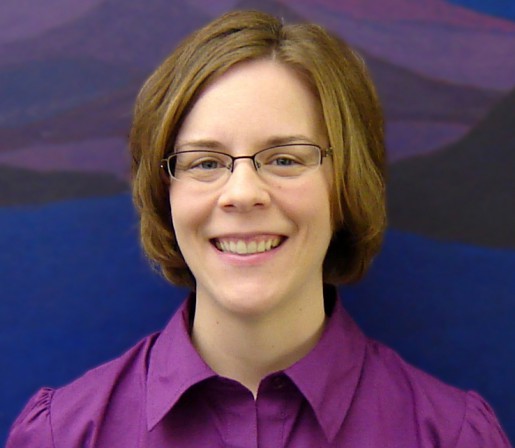
Reference Librarian and IACUC Liaison
Among its many areas of oversight, the University of Pittsburgh Institutional Animal Care and Use Committee (IACUC) ensures that researchers are compliant with the USDA Animal Welfare Act, including USDA Policy 12. This policy requires that investigators consider alternatives to procedures that may cause more than momentary or slight pain, or distress to research animals.
The USDA considers the performance of database searches and analysis of articles as an effective method for demonstrating compliance with this requirement. Literature searches and corresponding narratives should address the following 3R’s as discussed by Russell and Burch in their classic publication, The Principles of Humane Experimental Technique: Continue reading
Improve Information Communication with Infographics
Are you looking for a new way to disseminate research data so that your findings are more clearly communicated? Perhaps you are tired of generating the same unengaging year-end reports. You may want to consider designing an infographic, which is a “visualization of data or ideas that tries to convey complex information to an audience in a manner that can be quickly consumed and easily understood.”1 Infographic is often used as a catchall term for information displayed visually. The best infographics communicate data or information in a visual format that is easy to digest.
Visualization can make a huge difference in how we perceive data. Infographics are more engaging, more accessible, more persuasive, and easier to recall. Another popular feature is their shareability. Infographics can be posted on social media, e-mailed, or easily included in posters or presentations.
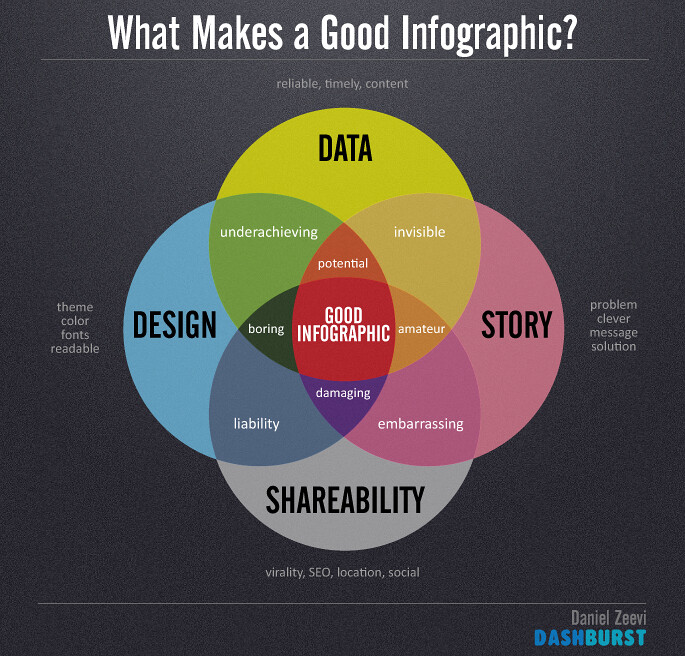
CC BY-ND 2.0
There are different tools that you can use to create your infographic. Traditional design software such as PowerPoint, Microsoft Publisher, and Adobe Illustrator are often used by professionals. These will offer the most control and flexibility. Drag and drop creators are Web-based applications that allow you to work within a layout and choose from ready-made objects. Examples of these are Piktochart, Infogr.am, Easel.ly, Venngage, Canva, and Gliffy. The library offers classes in Photoshop and Illustrator. A portion of the HSLS Infographics: Data Visualization for the Facebook Age class focuses on Piktochart.
The next time you are thinking about marketing, conveying information to patients, or even augmenting your data section in a publication, consider whether replacing raw data or information with an infographic would benefit your audience.
~Rose Turner
1. Smiciklas, M. The Power of Infographics: Using Pictures to Communicate and Connect with Your Audiences. Indianapolis, IN: Que Publishing, 2012.
Natural Medicines Comprehensive Database App
The Natural Medicines Comprehensive Database App provides up-to-date, authoritative information on complementary, alternative, and integrative therapies. Data is stored on your mobile device, so you can access the app without an Internet connection.
The Natural Medicines Comprehensive Database App is easy to use and navigation is simple. This all-inclusive reference tool contains:
- Information on approximately 90,000 herbal products, dietary supplements, vitamins, minerals, homeopathic products, and many other natural remedies;
- Multiple databases and interactive features including an Effectiveness Checker, Nutrient Depletion Checker, Natural Product/Drug Interaction Checker, Natural Medicines Brand Evidence-based Ratings, and accredited continuing medical education modules for physicians, pharmacists, nurse practitioners, physician assistants, and dieticians.
Links to drug references are available in the full Natural Medicines Comprehensive Database, but not the mobile app. Continue reading
Bioinformatics Videos “On Demand”
Have you ever missed a seminar because your experiment took longer than expected? Or got caught up in a meeting and forgot about a workshop you wanted to attend? Maybe you’re working at night with new data analysis software and have a question, but there’s no one to ask because it’s so late? It can be frustrating when your information needs and interests don’t coincide with the exact times such information is typically offered.
The HSLS Molecular Biology Information Service (MBIS) has online resources to help you learn at your own pace. MBIS has created a tool that searches multiple resources to help scientific researchers easily find talks, seminars, lectures, workshops, symposia, podcasts, tutorials, and instructional videos on your biomedical topic of interest.
Resources include:
- HSLS MolBio Videos: Video tutorials that explain how to use bioinformatics software and databases to answer basic and advanced genomics-related questions;
- NIH VideoCasting and Podcasting: Special National Institutes of Health events, seminars, lectures, and podcasts available for streaming live, as well as streaming from the archives, courtesy of the NIH Center for Information Technology;
- GenomeTV YouTube Channel: Collection of video resources from the National Human Genome Research Institute, including lectures, news documentaries, meetings, workshops, and more;
- Henry Stewart Talks (HST): The HST Biomedical & Life Sciences Collection provides over 1,500 specially prepared animated audiovisual presentations with synchronized narration by the world’s leading experts;
- JoVE: The Journal of Visualized Experiments is a peer-reviewed scientific video journal devoted to publishing scientific research in a visual format since 2006;
- NCBI YouTube Channel: Videos from the National Center for Biotechnology Information (NCBI), including presentations and tutorials about NCBI biomolecular and biomedical literature databases and tools;
- The OpenHelix Blog: A genomics resources news portal that posts a short “tip of the week” video describing how to use a database, pointing out a unique feature, or introducing a new resource.
Please contact us with suggestions of additional bioinformatics video resources to include in the search tool.
~Carrie Iwema
Benefits of Joining Mendeley’s University of Pittsburgh Group
![]() Mendeley is a reference management tool that allows you to organize your citations and documents. If you sign up (or sign in if you already have an account) for Mendeley using your Pitt e-mail, then you can join the University of Pittsburgh group. Joining gives you an additional 3.5 GB private storage, 3.5 GB shared storage, and 10 private groups. To learn more about Mendeley, take our FlashClass on Mendeley Basics.
Mendeley is a reference management tool that allows you to organize your citations and documents. If you sign up (or sign in if you already have an account) for Mendeley using your Pitt e-mail, then you can join the University of Pittsburgh group. Joining gives you an additional 3.5 GB private storage, 3.5 GB shared storage, and 10 private groups. To learn more about Mendeley, take our FlashClass on Mendeley Basics.
~Francesca Yates
HSLS Staff News
News
Molecular Biology Information Specialist Carrie Iwema, Reference Librarians Andrea Ketchum and Melissa Ratajeski, and Head of Reference and Research Initiatives, Charlie Wessel have received secondary faculty appointments in Clinical and Translational Science.
Publications
Jonathon Erlen, history of medicine librarian, along with co-author Megan Conway, published, “Disability Studies: Disabilities Abstracts,” in The Review of Disability Studies: An International Journal, 10(3-4): 103-104, 2014.
Presentations
Lydia Collins, consumer health coordinator, NN/LM Middle Atlantic Region, presented “Multidisciplinary Approach to Literacy: Explore the National Library of Medicine’s Online Playground,” at the Pennsylvania Science Teachers Association Conference, in State College, PA, on December 5, 2014.
Classes January 2015
HSLS offers classes on database searching, software applications such as Prezi, bibliographic management, molecular biology and genetics, and library orientations. For more information, visit the online course descriptions.
Classes are held on the first floor of Falk Library (200 Scaife Hall) in Classroom 1 and on the upper floor of the library in Classroom 2. All classes are open to faculty, staff, and students of the schools of the health sciences at the University of Pittsburgh, who will need a valid Pitt ID or e-mail account. They are also open to UPMC residents and fellows, who will need to show their UPMC IDs.
No registration is required, except where noted. Classes marked with an asterisk (*) qualify for American Medical Association Category 2 continuing education credit.
Class schedules are subject to change. Please consult the online class calendar for the most current information.
FlashClass
FlashClass is a “deal of the week” Groupon-like offer of timely and useful learning. Each week’s offer proposes one or two topics, and you’re invited to sign up to attend a one-hour class the following week. If at least three people sign up, we’ll hold the class. (We’ll notify you either way.)
HSLS CLASSES
Advanced PowerPoint for Presentations (Falk Library Classroom 2)
| Monday, January 26 | 1-2:30 p.m. |
EndNote Basics (Falk Library Classroom 2)
| Wednesday, January 21 | 9-11 a.m. |
PowerPoint for Conference Posters (Falk Library Classroom 2)
| Tuesday, January 13 | 9:30-11 a.m. |
Painless PubMed* (Falk Library Classroom 1)
| Tuesday, January 13 | Noon-1 p.m. |
| Friday, January 23 | 11 a.m.-noon |
| Wednesday, January 28 | 4-5 p.m. |
MOLECULAR BIOLOGY AND GENETICS RESOURCES
Gene Regulation Resources* (Falk Library Classroom 2)
| Wednesday, January 21 | 1-4 p.m. |
CUSTOMIZED CLASSES
Customized classes can be developed for your department, course, or other group.

